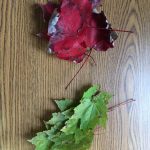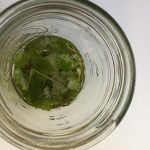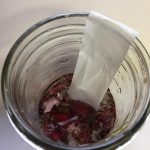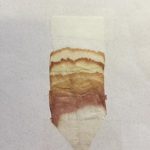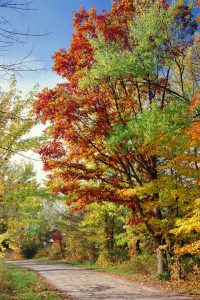
Fall is here and the leaves are changing colors right before our eyes. In just a few more weeks, the leaves will have fallen from the trees and winter will be right around the corner. But before that happens, let’s learn what’s going on inside of the trees… and you can even try an experiment at home to see the science behind the leaves changing colors.
Why do leaves change colors?
You’ve probably noticed that the sun comes up later and goes down earlier this time of year. In the summer, we see over 15 hours per day of daylight, but in October we’re down to about 8 hours of daylight in a 24-hour period. This is the main reason for trees changing colors. The lack of sunlight triggers the trees to begin getting ready for winter. Cells inside of the tree – especially at the locations where the leaves meet the tree stems – form a corky layer (also called an abscission layer) that stops all internal materials from moving about the tree. Carbohydrates and sugars produced through photosynthesis in the leaves are stopped from traveling into the tree stems and trunks, and minerals from the roots can no longer get to the leaves.
The chlorophyll connection
Chlorophyll is what makes tree leaves green. Chlorophyll absorbs sunlight, reflects green light (making leaves look green) and is essential to the internal food and oxygen production of the trees. Yellow and orange pigments are in leaves during the summer too, but are hidden by the abundant green color of chlorophyll. Once the corky layer begins to form at the leaf and stem area as mentioned above, chlorophyll production slows down and eventually stops. The green color in leaves begins to fade, but other colors now have their time to shine. Xanthophylls (yellow color) and carotenoids (orange color) show off after the green is gone, giving us beautiful fall colors.
Red and purple colors are produced in the fall by anthocyanins, which are developed from the sugars trapped inside of the leaf. You’ll typically see these colors later in the fall season. Finally, you’ll see brown leaves at the very end of the season and sometimes through winter. These colors are produced by tannins and are dominant in several species of oak trees.
Eventually the corky layer becomes so dry and hard that it separates the leaves from the stem or tree, and the leaves fall to the ground. Now is the perfect time to try an experiment to see what colors are actually in those leaves. Here’s how you can try something called leaf chromatography. Enjoy the fall colors in the Metro Parks and good luck with your experiment.
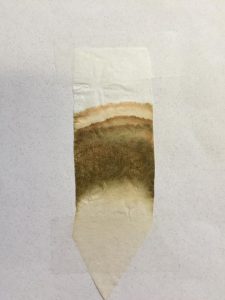
Leaf chromatography experiment
Items needed: leaves, glass jars, rubbing alcohol, coffee filters
- Collect a few leaves from the ground, and get a few leaves of each species. (For example get five leaves from a sugar maple, five leaves from a white oak, five leaves from a dogwood, etc.).
- Keep the types (species) of leaves separate so you can compare and contrast their colors at the end of the experiment. Put them in different bags, on different plates, or in different places on your counter or table top. Then smash, crush, rip and pulverize the leaves until they’re in tiny pieces.
- Put the smashed leaves in glass jars or containers, still keeping each species separate. Pour rubbing alcohol over the leaves until they are just barely covered.
- Cut strips of the coffee filters about 1-inch wide, and long enough to reach down into the glass containers, but hang over the top too. Put the bottom of the filter in the glass so it’s just touching the top of the leaves/alcohol.
- Fold the top over the rim of the jar so it stays in place. Leave the coffee filter there for 60-90 minutes.
- Go play outside in a leaf pile.
- Come back in and see what colors have “migrated” up the coffee filter. Some colors may be quite bright, others may be muted. Maybe you’ll see orange and yellow as well as green, or maybe you’ll just see red. It’s interesting to see what’s in your leaf.
(By Andrea Krava, Senior Naturalist at Blendon Woods and Rocky Fork Metro Park)
- Red and green maple leaves
- Green maple leaves in small pieces covered in rubbing alcohol
- Coffee filter strip in red maple leaf/alcohol mixture
- Red maple leaf color profile

